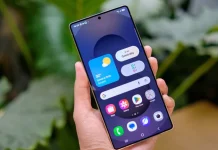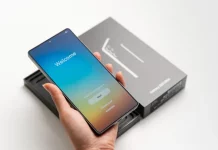The secret to a long-lasting tablet or phone lies in how you treat its battery. Modern devices rely on lithium-ion batteries, which are lighter, more compact, and offer higher energy density than older battery types. This means your device can store more charge in a smaller space, and unlike nickel-cadmium or nickel-metal batteries, lithium-ion batteries don’t suffer from the “memory effect”—the tendency to lose capacity if not fully discharged before recharging. As a result, you can recharge your device anytime without worrying about reduced performance.
However, even with these advances, battery maintenance is still crucial. While leaving your device plugged in occasionally won’t cause immediate harm, doing so regularly can lead to a “trickle charge” pattern, where the battery repeatedly tops off at 100%. This can generate heat and stress the battery over time. The best practice is to avoid frequent full discharges and keep your battery between 20% and 80% whenever possible. This reduces chemical stress on the battery cells and helps extend their lifespan.
What to Avoid for Better Battery Health
Charging to 100% Every Time
While it’s tempting to charge your device to 100%, doing so regularly can shorten battery life. Lithium-ion batteries are happiest when kept away from the extremes—neither fully empty nor fully charged. Keeping your battery in the 20%-80% range is ideal for long-term health. Although researchers have developed algorithms that could potentially double battery life, these are not yet widely available. For now, the best approach is to avoid charging to 100% unless absolutely necessary.
Leaving the Battery Dead for Long Periods
If you don’t use your tablet or phone daily, it’s easy to forget about it. But letting the battery drain completely and sit unused for days, weeks, or even months can damage the battery cells. Lithium-ion batteries should never be left empty for extended periods. If you plan to store your device for a long time, power it off while it still has some charge, and set a reminder to recharge it occasionally. This helps prevent battery degradation and keeps your device ready for use.
Using the Wrong Charger or Damaged Cables
Always use the charger and cable recommended by the manufacturer. Using uncertified or low-quality chargers can lead to unstable voltage, overheating, and even damage to your device. Damaged or frayed cables can also cause power fluctuations, which stress the battery and internal components. Inspect your charging cable regularly for signs of wear, and replace it if you notice any damage. Intermittent charging notifications or inconsistent power delivery are warning signs that your cable may need replacing.
The Future of Battery Technology
Scientists are working on next-generation batteries, such as water-based designs, that promise even greater energy storage and longer lifespans. Until these innovations become mainstream, the best way to protect your device is to follow simple battery care habits: avoid extreme charge levels, use the right charger, and keep your battery healthy with regular, moderate use.





